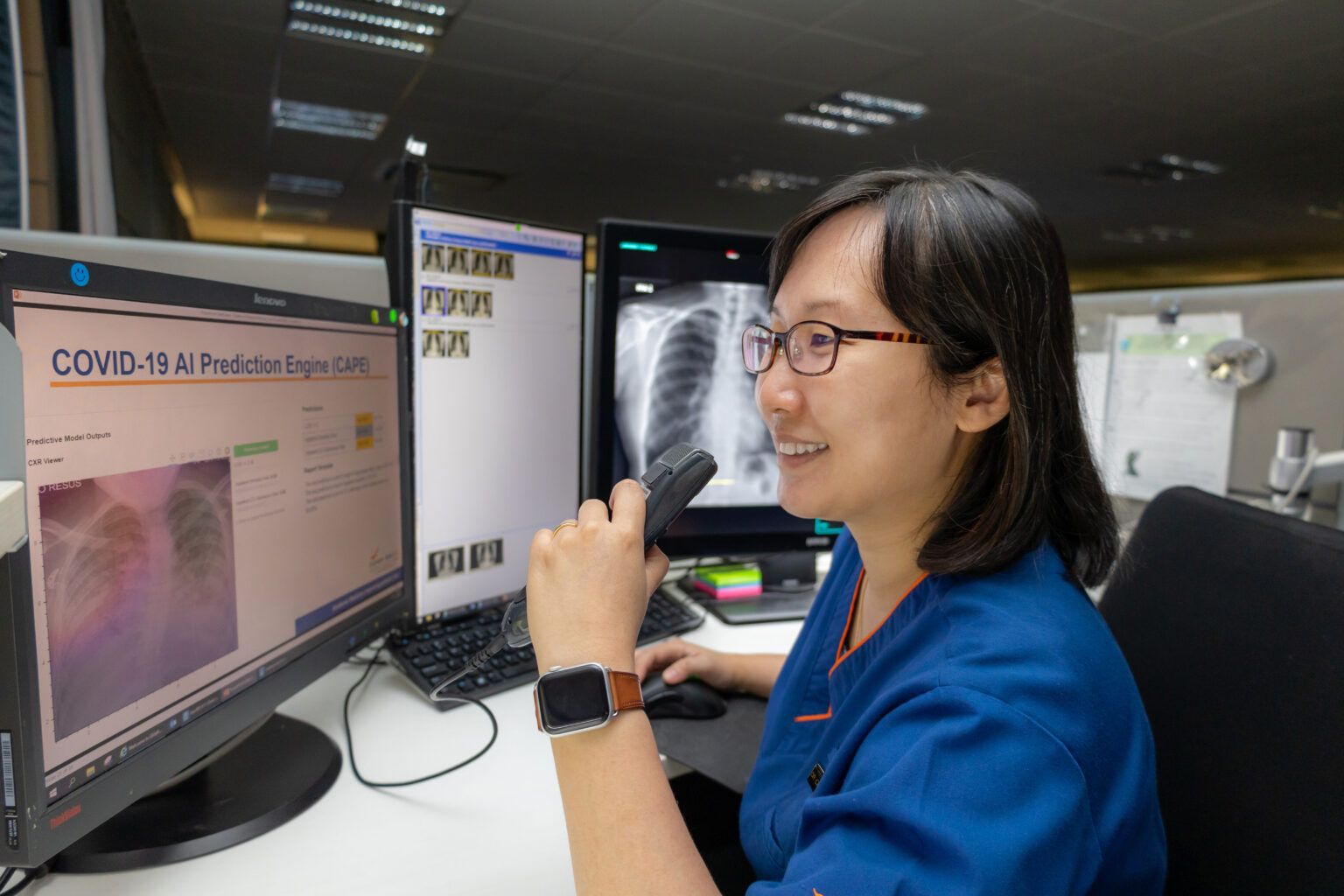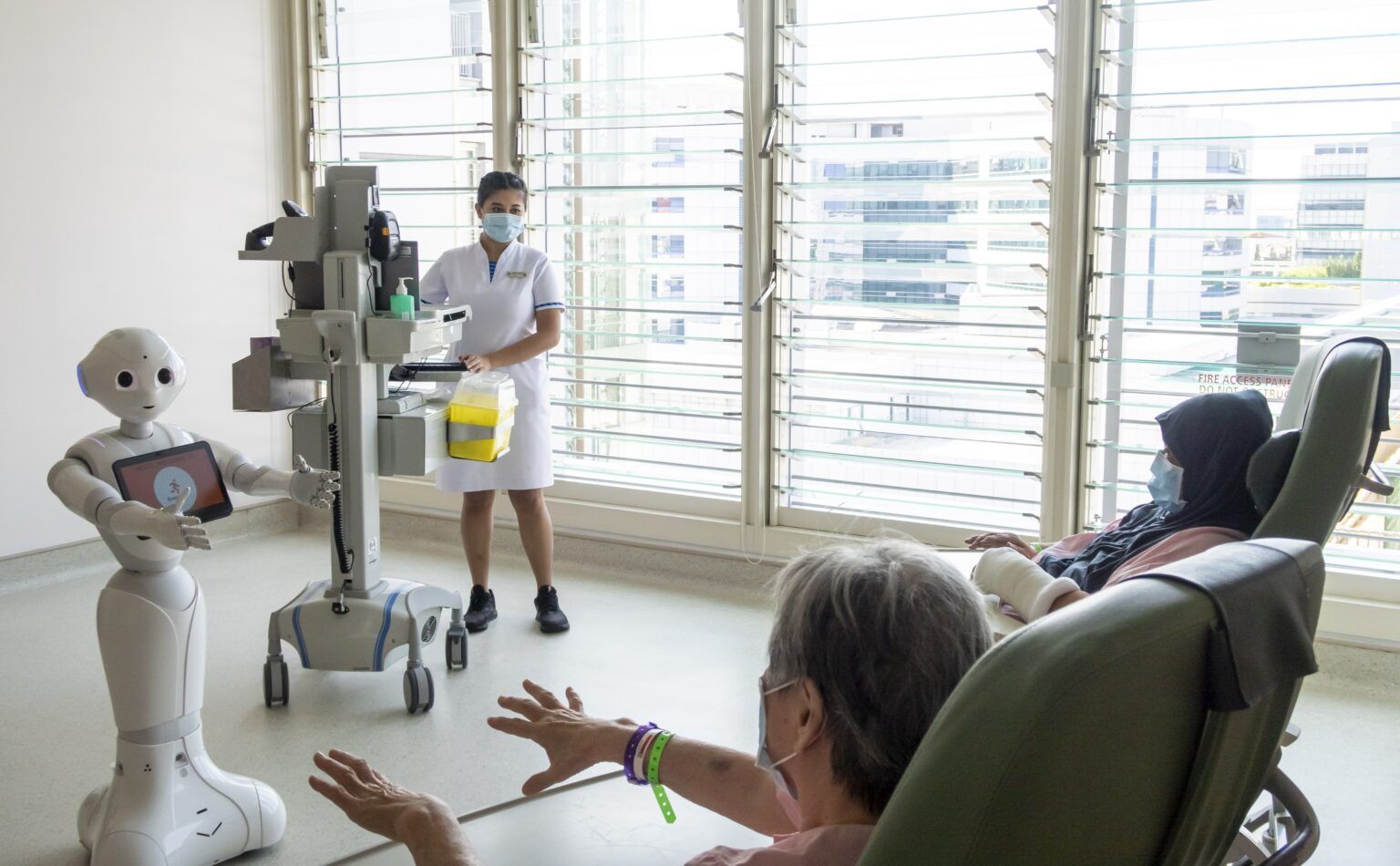Changi General Hospital’s transformation for better healthcare and better health
)
Ranked amongst the world’s best smart hospitals, CGH has tapped on AI, robotics, and automation to deliver better care and also support staff workload
A rapidly ageing population, tight labour market and rising healthcare costs – these are some of the growing challenges faced by Singapore’s healthcare system.
In tackling these challenges while continuing to deliver quality healthcare for the population, maintaining the status quo was not an option for Singapore’s healthcare providers, not least the public hospitals which cater to 80% of the nation’s hospital care. The imperative for innovation and transformation has never been more pressing.
One of Singapore’s public healthcare institutions (PHI) leading the charge is Changi General Hospital (CGH). In recent years, it has rolled out a slew of smart hospital projects, ranging from robotics to remote monitoring devices. These efforts have seen it clinch 31st place on Newsweek’s Best Smart Hospitals 2024 listing, the highest amongst Singapore hospitals, and second highest overall for hospitals in Asia.
The impetus for going ‘smart’
|
Clinical Associate Professor Ng Kee Chong, Chief Executive Officer, Changi General Hospital |
For Clinical Associate Professor Ng Kee Chong, CEO of CGH, CGH’s transformation into a smart hospital is targeted to benefit two groups: firstly, the population that CGH looks after primarily in the east of Singapore; and secondly, its staff. Examples of smart technologies and innovations implemented for its patients include the CAPE tool (Community Acquired Pneumonia and COVID-19 Artificial Intelligence Predictive Engine). Using a deep learning model, the tool predicts the severity of heart attacks or infections based on chest X-ray images. This helps clinicians in triaging patients to ensure those at higher risk are provided appropriate and timely care. |
The hospital has also partnered Respiree – a medical technology spin-off of Singapore’s Agency for Science, Technology and Research (A*Star) – on a unique wearable medical sensor. Comprising a sensor patch and finger oximeter, the device tracks the patient’s vital signs such as respiratory rate, heart rate and oxygen saturation.
These devices are being connected to a central system via Bluetooth, allowing patient data to be captured in real-time and seamlessly integrated into each patient’s individual electronic medical record. Nurses can thus easily track the vital signs of all patients from their workstations, saving the need to take vital signs at patients’ bedside. Such continuous monitoring, coupled with early warning alerts and algorithms that predict when the patient may get worse, help ensure swift medical response.
While the above are examples of technology use in the hospital setting, Clin A/Prof Ng emphasised that CGH’s responsibility also extends to the wider population who are not unwell and do not require healthcare at the moment.
“In line with the Healthier SG strategy, we look at technologies and digital capabilities that help us improve the health of our population through their different life stages, whether they currently suffer from a medical condition or not. We are talking about not just improving their lifespan, but also their healthspan,” said Clin A/Prof Ng.
“To do this, we will first need to gather anonymised big data that helps us better understand the real-world context. This would then help us design specific strategies, whether through technologies such as AI, to deliver more efficient or more personalised care.”

Based on chest X-rays, the Community Acquired Pneumonia and COVID-19 Artificial Intelligence Predictive Engine (CAPE) can predict the likelihood of patients requiring critical care almost immediately, allowing CGH medical teams to prescribe interventions to improve patient outcomes.
Enter the robots
Step into CGH today and you may be treated to the sight of robots weaving smoothly around the premises alongside their human counterparts. It has more than 80 robots under its roof.
Last year, CGH introduced a trio of autonomous mobile robots (AMR), with the aim of improving staff efficiency and patient experience. The EDi robot takes on a wayfinding role by ushering visitors to their intended destinations, whereas MEDi helps transport medication to different parts of the ED. Meanwhile, BLANKi roams around the ED waiting area, delivering blankets to visitors who may need them.
Robotics and automation are set to play increasingly bigger roles in healthcare here, as Singapore’s labour pool ages and shrinks, noted Clin A/Prof Ng.
CGH is working with the other public healthcare institutions in scaling up the use of these robots, while discussions are also ongoing in developing next-gen robots with ‘manipulators’, or ‘robotic arms’ that are capable of moving or interacting with objects.
“As our population ages, our workforce ages as well. So it’s important for us to think about how technology can take on routine or physical tasks, such as heavy lifting or pushing. This would support our older workers in delivering care without affecting their own health, and allow our staff to focus on more patient-centric and value-adding work.”

Smart transformation goes beyond the hardware
Adoption of technology, though, is but one part of the overall smart hospital transformation process.
The hospital will first need to set up the necessary infrastructure – whether in terms of space or technical capabilities – that supports such smart technologies, pointed out Clin A/Prof Ng.
Then comes the process of change management and workflow redesign.
“This transformation is more than simply changing from analogue to digital. We need to deconstruct the entire process and reconstruct it again, integrating the technology elements. It’s also a major paradigm shift, so engaging staff to change their mindsets with regard to technology and workflows is always a work in progress,” said Clin A/Prof Ng.
Yet, time is of the essence on the innovation front. Hospitals seeking to be at the forefront of technology advancements will need to be speedy at planning, and take an agile and bold approach or risk being left behind.
The smart hospital of the future
To this end, the hospital is working on several major projects set to significantly transform its operations and further enhance care delivery.
It has embarked on an ambitious project to create a ‘digital twin’ – a digital replica of a space or system – of its Emergency Department. Through simulation modelling, the digital twin will help generate scenarios, such as mass casualty scenarios, which would help forecast resource needs, make improvements to existing processes, and guide decision making.
Then there is the wider shift of care from hospital to community. This goes alongside Singapore’s recent announcement of home hospitalisation as a ‘recognised and accepted model of care’ in Singapore’s public hospitals.
“I think increasingly, the term ‘hospital’ will become a misnomer. We are starting to define a hospital as a healthcare delivery system or health portal, where we leverage technology to connect with our patients where they are at and deliver more personalised and precise care,” said Clin A/Prof Ng.
This doesn’t mean the human touch is lost from care, though. The key is whether the face-to-face interactions need to be in the hospital setting, or if it could be moved into the community for more convenience and accessibility to patients.
This also calls for a rethink of what and how Singapore’s population health outcomes are to be achieved.
“Maintaining population health involves not just hospitals and clinics, but also the various players in the community such as social service agencies and non-government organisations. I think we should not medicalise health too much – sometimes all the person needs is more rest or social support, and not another pill. CGH has a strong community presence that we have built up over the past 10 years, and we continue to work closely with the community nurses and well-being coordinators on the ground to connect the care needs with the right resources.”
“I believe the smart hospital of the future will not just integrate virtual and physical care, but also clinical care with individual social needs. But ultimately, it’s to centre our care around the well-being of the individual.”
Top banner photo: A robot navigator EDi guiding next-of-kin to a patient care area in CGH’s Emergency Department (ED) to visit her loved one.
All photos courtesy of Changi General Hospital.


